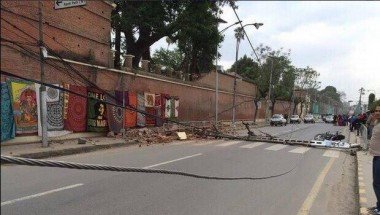Articles features
Frequently asked questions about earthquakes

In the wake of Saturday's massive earthquake in Nepal that wreaked
havoc in the Himalayan nation besides rocking neighbouring countries,
people want to know more about the phenomenon which is a manifestation
of the Earth's crust settling down. Here are some FAQs:
Q. What is an earthquake and what causes them to happen?
A.
An earthquake is caused by a sudden slip on a geological faultline. The
tectonic plates are always slowly moving, but they get stuck at their
edges due to friction. When the stress on the edge overcomes the
friction, there is an earthquake that releases energy in waves that
travel through the Earth's crust and cause the shaking that we feel.
Q. What's the difference between foreshocks and aftershocks?
A.
"Foreshock" and "aftershock" are relative terms. Foreshocks are
earthquakes that precede larger earthquakes in the same location.
Aftershocks are smaller earthquakes that occur in the same general area following a larger event or "mainshock".
As
a general rule, aftershocks represent minor readjustments along the
portion of a fault that slipped at the time of the mainshock.
The frequency of these aftershocks decreases with time, but they can go on for weeks, or sometimes months.
Q. Can the position of the Moon or the planets affect seismicity?
A.
The Moon, Sun, and other planets have an influence on the Earth in the
form of perturbations (small changes) to the gravitational field.
Many
studies in the past have shown no significant correlations between the
rate of earthquake occurrence and the semi-diurnal tides when using
large earthquake catalogues.
Some recent studies, however, have found a correlation between Earth tides and some types of earthquakes.
Q. Are there more earthquakes in the morning or in the evening?
A. Earthquakes are equally as likely to occur in the morning or the evening.
Q. At what depth do earthquakes occur? What is the significance of the depth?
A. Earthquakes occur in the Earth's crust or upper mantle, which ranges from the Earth's surface to a depth of about 800 km.
The
strength of shaking from an earthquake diminishes with increasing
distance from the earthquake's source, so the strength of shaking at the
Earth's surface from an earthquake that occurs at a depth of 500 km is
considerably less than if the same earthquake had occurred at a depth of
20 km.
Source: US Geological Survey



































